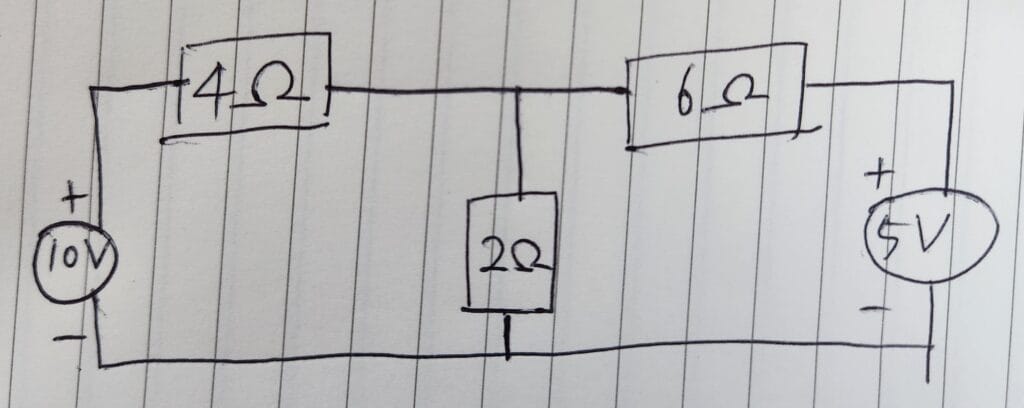Mastering the Superposition Theorem: One Source at a Time
Ever looked at a circuit with two or three power supplies and thought, “Where do I even start?” You’re not alone. That’s exactly where the Superposition Theorem comes in. It’s a clever and powerful way to break a complicated circuit into smaller, manageable pieces.
Let’s walk through what it is, when to use it, how to apply it—and of course, I’ll give you three full examples to really drive it home.
🧠 What Is the Superposition Theorem?
The Superposition Theorem says that in a linear circuit with multiple independent sources, the total current or voltage at any element is equal to the algebraic sum of the currents or voltages caused by each source acting alone, while all other independent sources are turned off.
🛠️ What Does “Turn Off a Source” Mean?
- For voltage sources: Replace it with a short circuit (0V).
- For current sources: Replace it with an open circuit (0A).
Important: This only works for linear circuits (no diodes, transistors, or other nonlinear components).
✅ Example 1: Beginner Level
Problem:
Find the current through a 2Ω resistor in the following circuit:
- 10V voltage source in series with 4Ω
- 5V voltage source in series with 6Ω
- Both branches meet at a node with a 2Ω resistor

Step 1: Consider only the 10V source
Turn off the 5V source → replace with short.
Now the circuit is:
10V → 4Ω → 2Ω → ground
Total resistance:

Current from 10V source:

Voltage across 2Ω:

Step 2: Consider only the 5V source
Turn off the 10V source → short it.
Now the circuit is:
5V → 6Ω → 2Ω → ground
Total resistance:

Current from 5V source:

Voltage across 2Ω:

Step 3: Add the contributions
Since both currents flow in opposite directions through the 2Ω resistor:

Current through 2Ω:

✅ Final Answer: 1.04A
🧠 Final Thoughts
Superposition lets you take a mess of a circuit and treat each source one at a time. It works like magic—especially when you have both current and voltage sources. Just remember to turn off the others properly, keep track of direction, and sum everything at the end.
Got your head around it? Try making up your own circuits and applying superposition. Practice is what makes this technique second nature.
Millman’s Theorem Made Simple with 3 Solved Circuit Problems

Leave a Reply